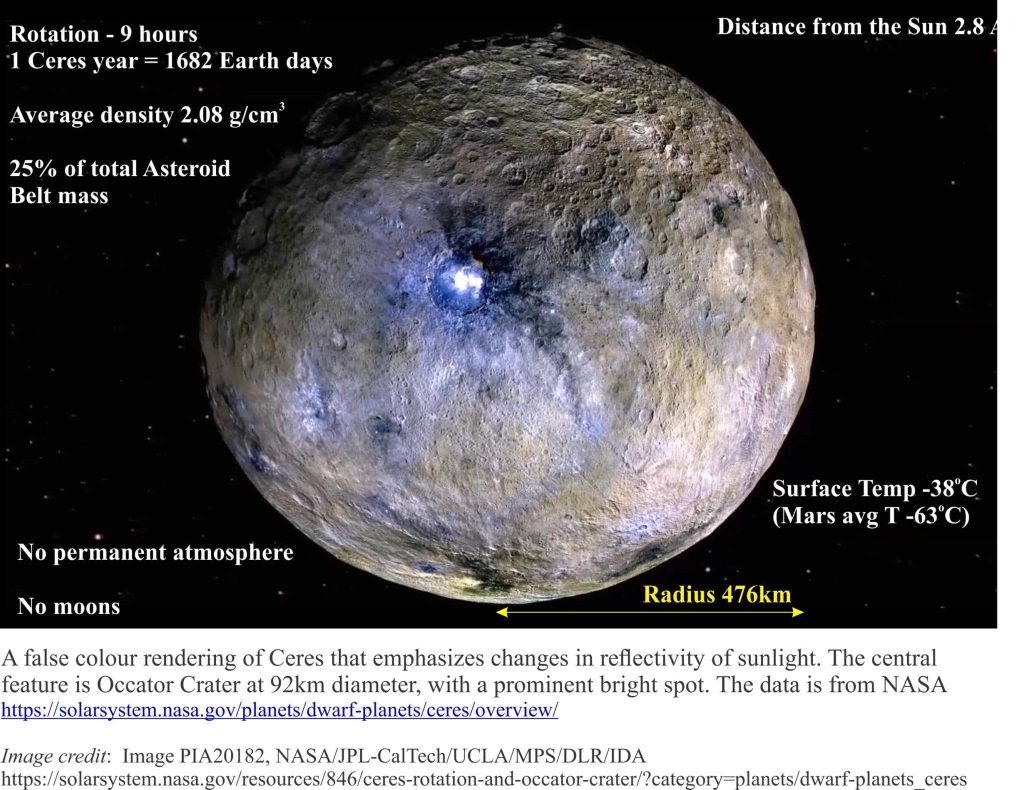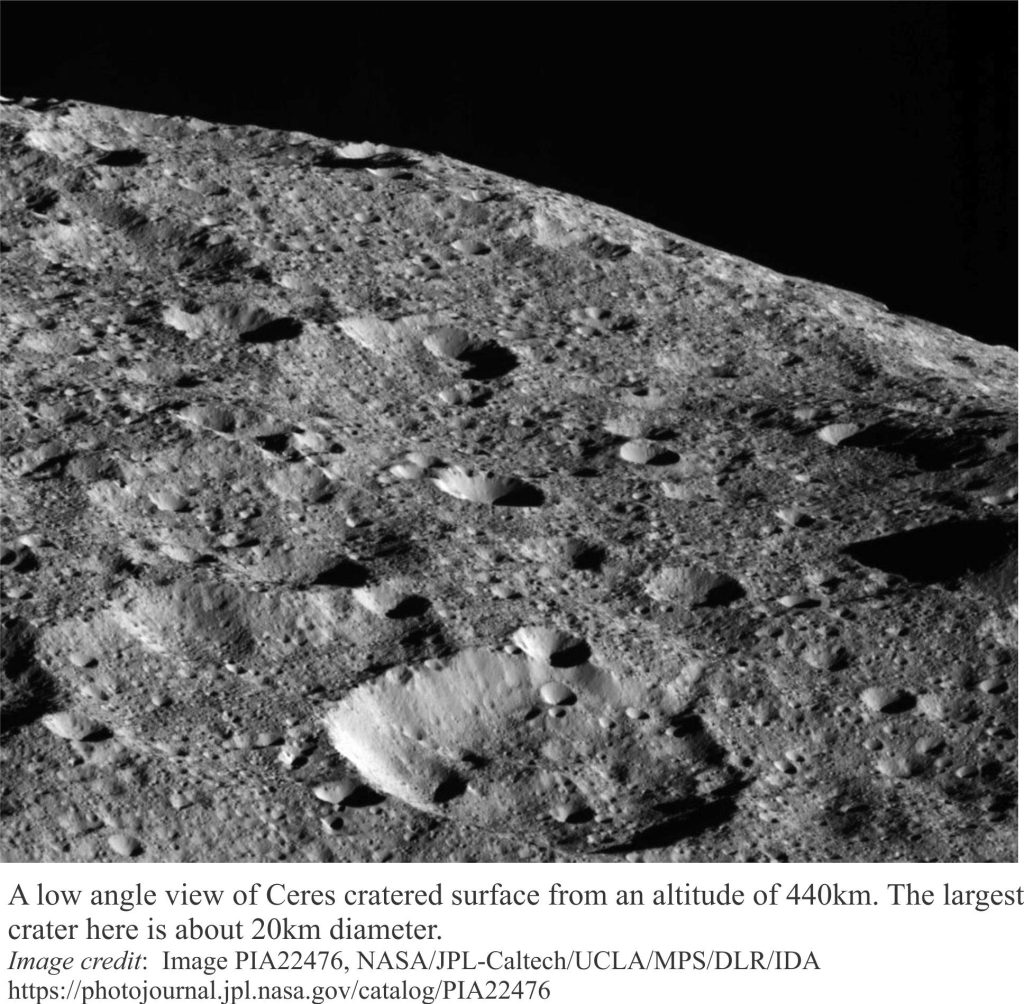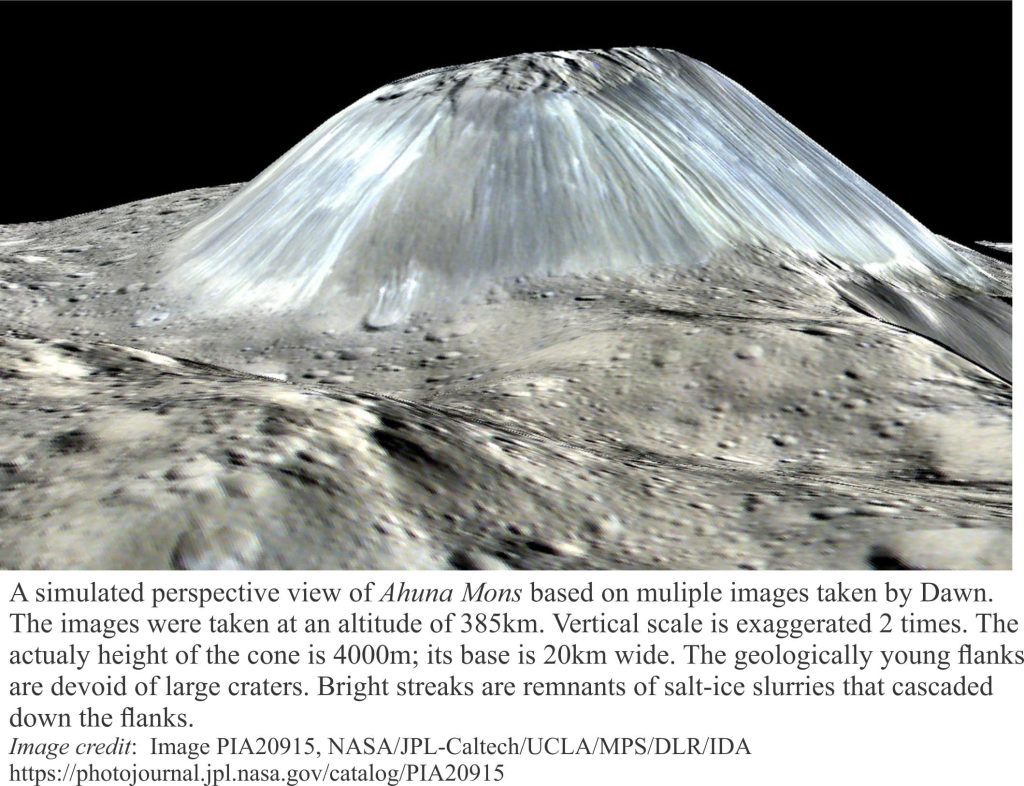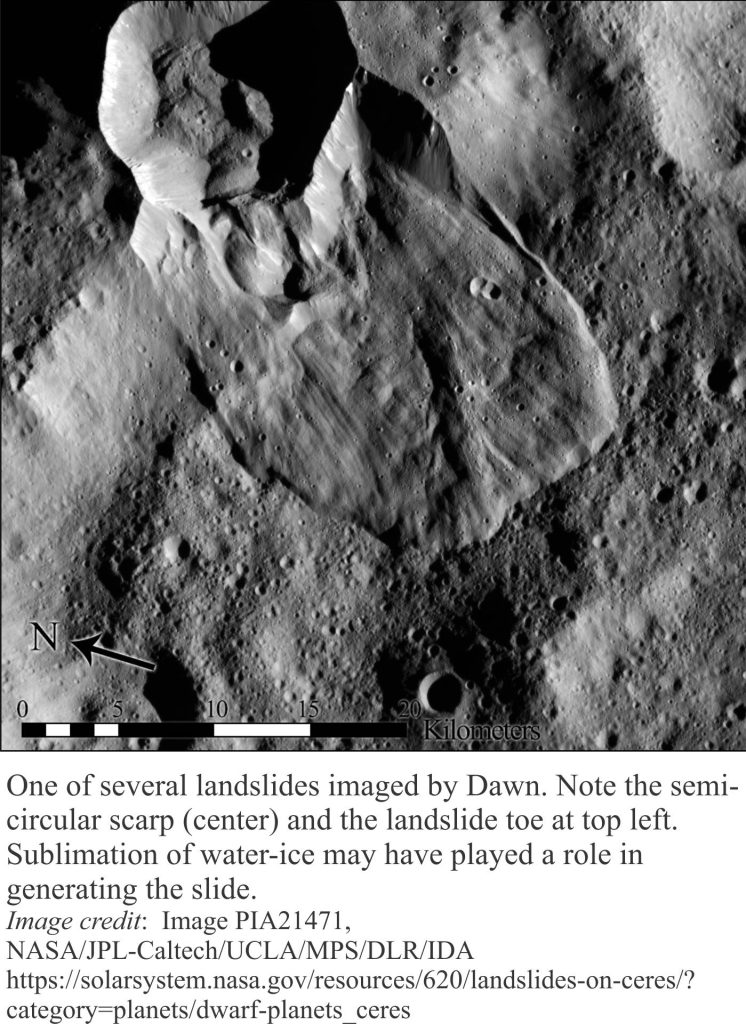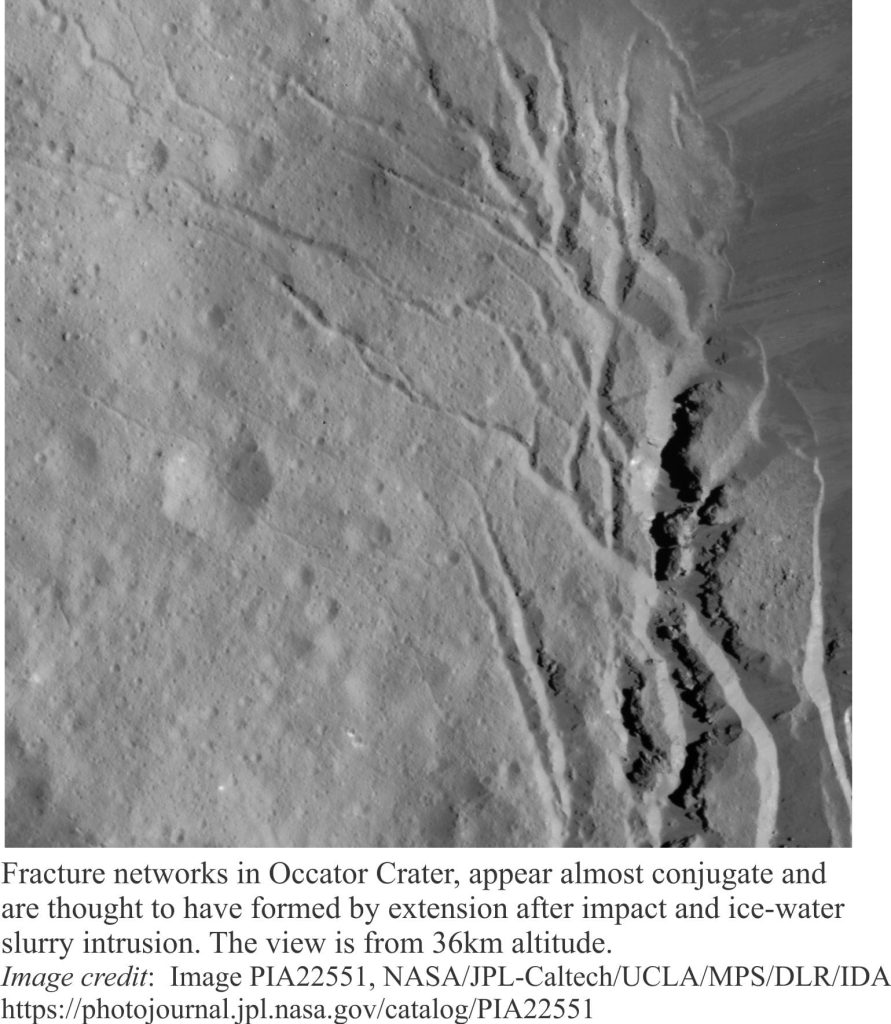Asteroid Ceres has been promoted to dwarf planet
There is a disturbance in the symmetry of the solar system. Between the orbits of Jupiter and Mars there should be a planet. Instead, there is a belt of rubble, big rocks, little rocks, and lots of dust. In 1801 Giuseppe Piazzi discovered Ceres, in one of those fortuitous accidents that litter the history of science, (apparently he was looking for a star) and surmised, not unreasonably, that this was the missing planet. However, several other largish planet-like bodies were discovered some years later, all having similar orbits to Ceres. By 1850 so many objects had been discovered that Alexander von Humboldt coined the term Asteroid Belt, and by 1863 Ceres and its cousins were recognised as asteroids.
The asteroid count as of 25 September 2019 was 796,990! Expect this number to increase.
In 2006 Pluto was demoted to dwarf planet by the International Astronomical Union, but on the upside Ceres’ status improved setting it apart from all the other asteroids – it became a dwarf planet. According to the IAU, a dwarf planet “… is a celestial body that (a) is in orbit around the Sun, (b) has sufficient mass for its self-gravity to overcome rigid body forces so that it assumes a hydrostatic equilibrium (nearly round) shape, (c) has not cleared the neighbourhood around its orbit, and (d) is not a satellite”.
Ceres is now regarded as an embryonic or proto-planet, one that began accreting 4.6 billion years ago but kind of lost interest; perhaps it liked its neighbours.
Our knowledge of Ceres increased exponentially with the arrival in 2015 of Dawn, a NASA satellite tasked with the imaging and measurement of Ceres and asteroid Vesta (Dawn’s fuel ran out October 2018 but continues to orbit Ceres). Some physical measurements are shown in the image at the top of this page.
One of Dawn’s tasks was to measure Ceres’ gravity. Gravity measurements over different regions of the dwarf planet helps scientists decipher its inner structure. Two interesting phenomena emerge:
- The internal structure is differentiated into a solid core of silicate minerals (most of Earth’s crust is composed of silicate minerals), a thick inner layer, and thin outer crust. The outer crust is pockmarked with craters.
- Because Ceres’ average density is low (less than half that of Earth) the inner layer must contain minerals lighter and less dense than silicates. Earlier investigations pointed to the possible existence of water. This was confirmed by Dawn’s direct observations.
Imaging of Ceres’ surface shows several anomalous bright spots called faculae, that analysis of spectral data (light) shows are mostly water-ice and salts. In itself this is pretty exciting. But surface imaging showed another astounding feature – an ice volcano, or cryovolcano. Ahuna Mons as it is called, is a relatively simple cone, almost circular in cross-section, about 20km wide at its base and 4000m high. It stands out in the Dawn imagery because of the reflectivity of its ice-salt-mud mixture. Ahuna Mons must be quite young (geologically) because its conical shape shows little degradation and there are very few craters across its flanks.
Although water-ice has probably been extruded to Ceres’ surface, its fate is sealed by the conditions there: constant freezing temperatures and the almost perfect vacuum of space. Under these conditions ice will sublimate, a process where solid ice converts directly to water vapour without forming liquid water along the way. Most of the water vapour would be lost to space. On Ceres, sublimation is probably an important process that advances degradation of its cryovolcanoes.
Ahuna Mons is the only geologically recent cryovolcano but it is not the only example on Ceres’ cratered surface. In fact, 32 older, more degraded domes have been mapped with diameters greater than 10km and heights of 1km and more. Cryovolcanism is an important process on Ceres.
Ahuna Mons water-ice salt-mud mix must have come from Ceres’ interior as a slurry. This implies that the inner layer, or mantle is not a static solid mass but is capable of some kind of convective flow. Detailed gravity measurements around Ahuna Mons (collected by Dawn) show an anomalous mass beneath the surface dome that has been interpreted as a mantle plume. The plume is crudely analogous to Earth-bound mantle plumes associated with rising hot magma and volcanic eruptions; in contrast, Ceres’ plumes lack the kind of heat associated with igneous mantle plumes.
Several landslides were also imaged by Dawn. The example shown below is about 20km wide. Slide initiation seems to be associated with water-ice, possibly its sublimation.
Intrusion of ice-water-salt mixtures is also implicated in the formation of fracture networks on impact crater floors. Fracture sets are common in Ceres’ craters; they are also found in Lunar craters. On the Moon the fractures are thought to be caused by intrusion of hot igneous melts (melting caused by meteorite impact). On Ceres, they may be related to the weakening of the crust during impacts and stretching as the impacted crust was pulled apart above rising water-ice-salt plumes.
Additional evidence of tectonic activity over Ceres’ crust is seen as fractures, ridges, faults and linear troughs that extend 10s of kilometers beyond the impact craters. It was reported recently that some of the faults are thrust faults – a thrust fault occurs where a slab or panel of dislocated rock is pushed over the top of another slab of rock (a common structure in Earth’s mountain belts where thrust panels can be 10s to 100s of meters thick). Some of these rock slabs may carry entire craters. The overall affect is to contract, or shorten the crust, unlike the crater fault networks that extend or stretch the crust. An emerging hypothesis for the Ceres thrust faults is that the dwarf planet has shrunk at some stage during its formation. Whether this process continues today is not known.
It’s an exciting time to be a planetary geologist-scientist, teasing new discoveries and hypotheses from the wealth of satellite data across the Solar System. Perhaps, if I had my time again…
